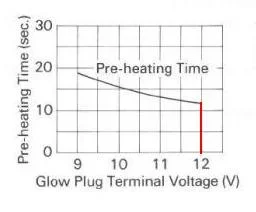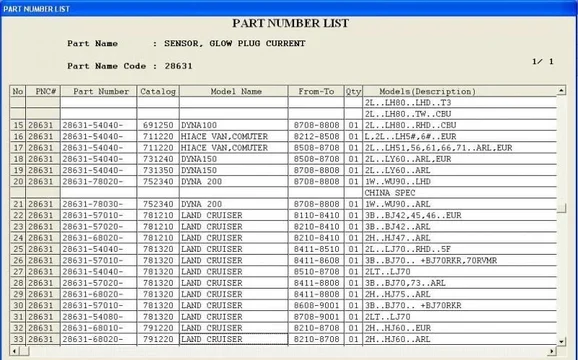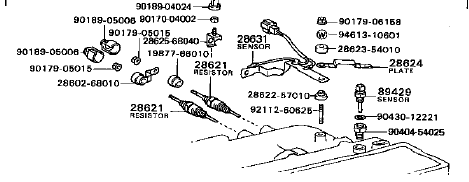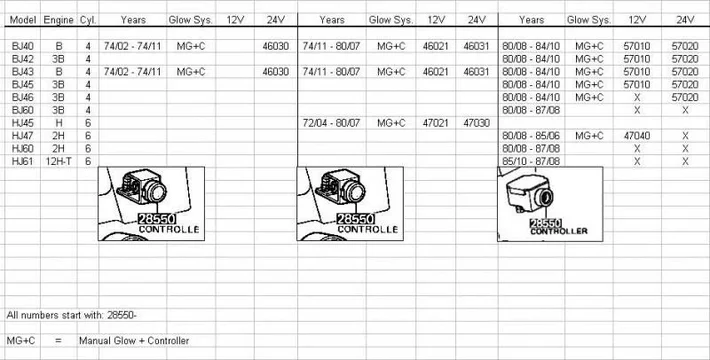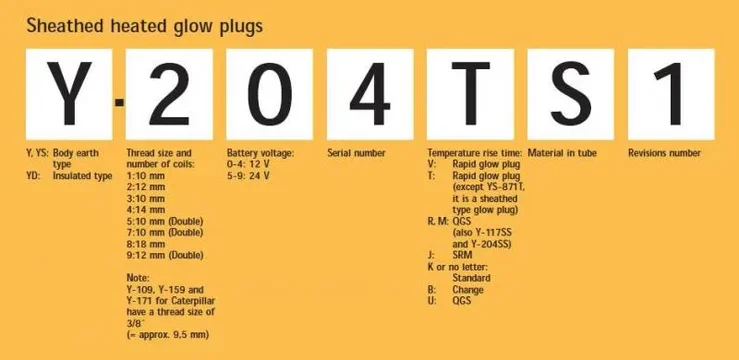- Thread starter
- #41
So I have Superglow apparently. (1985 HJ60)
Going off the volt meter, I think they glow at 6 volts for about 2 seconds, and then after glow for a bit longer, the time depending on the temperature, at 3 volts think. Is that correct?
.....I would have expected to see double those voltage readings ... but then I'm unfamiliar with Super Glow.
At this stage I would have expected around 12V being applied in the first stage and then around 6V for the second stage. But I intend to research better answers for this further down the thread when I'll look at wiring diagrams for each type of pre-heating system.....
Well. - At this point in time I still suspect you should see 12V in stage one followed by 6V in stage 2.
What voltage figures do other owners of 12 volt HJ60 Super Glow cruisers see?
If your low figures aren't normal (as I suspect), perhaps they're cause by
- a weak battery
- damaged contacts inside your glow relays
- a weakened (high resistance) fusible link feeding your plugs
- a poor connection somewhere in your busbar feed wiring

Edit: Here's another couple of Super Glow pre-heat diagrams that I've just uplifted from another thread:

I note that they too show the mysterious "Sensing Resistor" aka "Glow Plug Current Sensor". What does this thing look like? (If they really do exist and anybody has one.)
At first I thought it was the thing that commonly appears on the intake manifold of cruisers with Super Glow (that outwardly resembles a glow plug).
But this image squashed that idea:

Apparantly that one is the "Glow Plug Resistor" (aka "Dropping Resistor") which drops the voltage to the plugs for the 2nd stage of pre-heat.
I eagerly await enlightenment

Edit.

 Rudi just came to my rescue with another Email message. Here's what I've been looking for on a 2H engine in an HJ75.
Rudi just came to my rescue with another Email message. Here's what I've been looking for on a 2H engine in an HJ75. 
It is a little bent-up strip of flat metal (with sensor wires attached) that carries all the juice to the glow plug busbar. (So it must indeed provide current-flow feedback to the "timer" by sensing voltage-drop along its length.)
Last edited:




